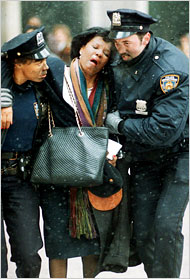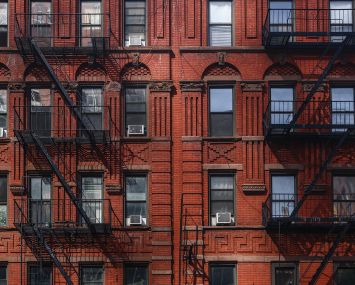The 1993 World Trade Center Bombing: 20 Years Later
By Al Barbarino February 26, 2013 7:00 am
reprints

When terrorists detonated a monster bomb in the underground parking garage at the World Trade Center’s North Tower on February 26, 1993, it shook the city with seismic strength.
Six people died and 1,042 were injured in the bombing. But it came before the widespread understanding, blunt as it was, that terrorists wanted to kill as many Americans as possible, and many pushed the event aside as a one-off, random act of violence.
“A bunch of kooks with a vendetta,” said one New York City building owner, recalling the stigma surrounding the bombing at the time.
Today, the bombing is viewed by most as a less severe precursor to the 9/11 attacks, when, eight and a half years later, terrorists succeeded in doing what they had failed to do the first time. But the previous event had already exposed many of the city’s vulnerabilities.
The blast from the bomb created a 100-foot crater, several stories deep and several more high. It collapsed walls and floors. It ignited fires. It trapped hundreds in elevators and stairwells for hours. It tossed cars “like toys,” noted The New York Times on its front page, the day after the attacks.
It also showed that terrorists don’t discriminate: it took several hours for a class of kindergartners from Gravesend, Brooklyn to get down the stairs from the 107th floor, while a class of their peers remained trapped in an elevator.

On the anniversary of the bombing, those interviewed for this article marveled about a time when New Yorkers were free to walk into buildings, exploring as they pleased, skipping through block-through properties to walk to work – a time, even, when brokers entered buildings of competitors, looking to poach tenants, unabashed and met with little resistance from building staff.
“You signed your name and you could have signed whatever you wanted – Donald Duck, Mickey Mouse,” said Henry Celestino, executive vice president at L&L Holding Company. “The guards weren’t trained to stop them, so the protocols that are given to the security guards, compared to the protocols that were provided 20 years ago, are much different.”
A shining 104-story gem at One World Trade Center now instills pride where a void remained for many years, but the question remains as to whether the city will be prepared if there’s another attack.
Cutting edge technology at the new World Trade Center site will epitomize strides that have been made in technology – and common sense – over the last two decades, as building owners adapt to the heightened risks, some experts said.
“Public buildings are no longer public,” said Sean Brown, general manager at Maryland-based building security firm Datawatch Systems. “These catastrophes have pushed the envelope on technology. There’s definitely a concern in any of the prominent towers, but building owners in New York have taken big strides forward to putting the advanced systems in place to service local buildings as best they can.”
The addition of trained personnel and security turnstiles at the lobbies and entryways to most of the city’s buildings are among the first lines of defense, measures that today seem mundane.
“I used to cut through buildings as a short cut, and to stay warm in the winter and cold in the summer,” said one longtime city resident, an executive with a leading public relations firm. “They were block-through buildings and you cut through and it was easy. Well that’s gone, never to be again.”
In addition, strategically-placed cameras and tenant security systems tied to card reader systems provide second and third lines of defense, said Mr. Brown, who lists Brookfield Properties, L&L Holding Company and Mack-Cali among his New York clients.
He referred to each system as a “choke point,” noting the switch from black and white analog cameras to HD, IP-based systems to highlight the technological leaps that have become both feasible and necessary.
“The first person who buys it pays the most money for it and as ten more people buy it, the price comes down, just like the big flat screen TVs,” he said.
Delta barriers and concrete planters now line prominent buildings, preventing vehicles from coming and going freely. Technology and vehicle screening mechanisms are beginning to provide the checks and cover the responsibilities once placed solely on manpower. And the brass keys once used for entry into parking garages later shifted to insert keys, which could not be duplicated, and then to electronic cards.
“The next evolution is biometrics, where the credential is going to be your eyes, or your fingerprint,” Mr. Brown said.
The Port Authority of New York & New Jersey, which owns the jewel at One World Trade Center with The Durst Organization, will be in charge of perimeter security at the entire site, sources said. The Port Authority declined to be interviewed over the phone, but it responded via email to questions posed by The Commercial Observer.
“After the 1993 World Trade Center bombing and 9/11 that followed, the approach to building security in New York and around the world drastically changed, and the World Trade Center was designed with this in mind,” the email stated. “Vehicle screening centers are now commonplace at most high-rise buildings, and the World Trade Center will have one of the most state-of-the-art facilities of this type in the world.”
The tower itself was built with the “strongest concrete ever used in a New York City skyscraper,” and the design “meets or exceeds” beefed up building codes set forth in the wake of previous incidents, The Port Authority said.
(Click below for page 2)


